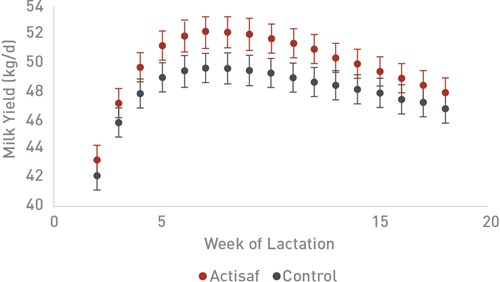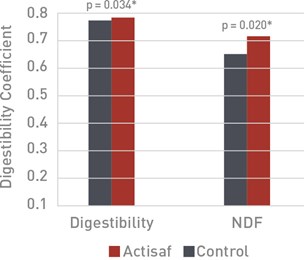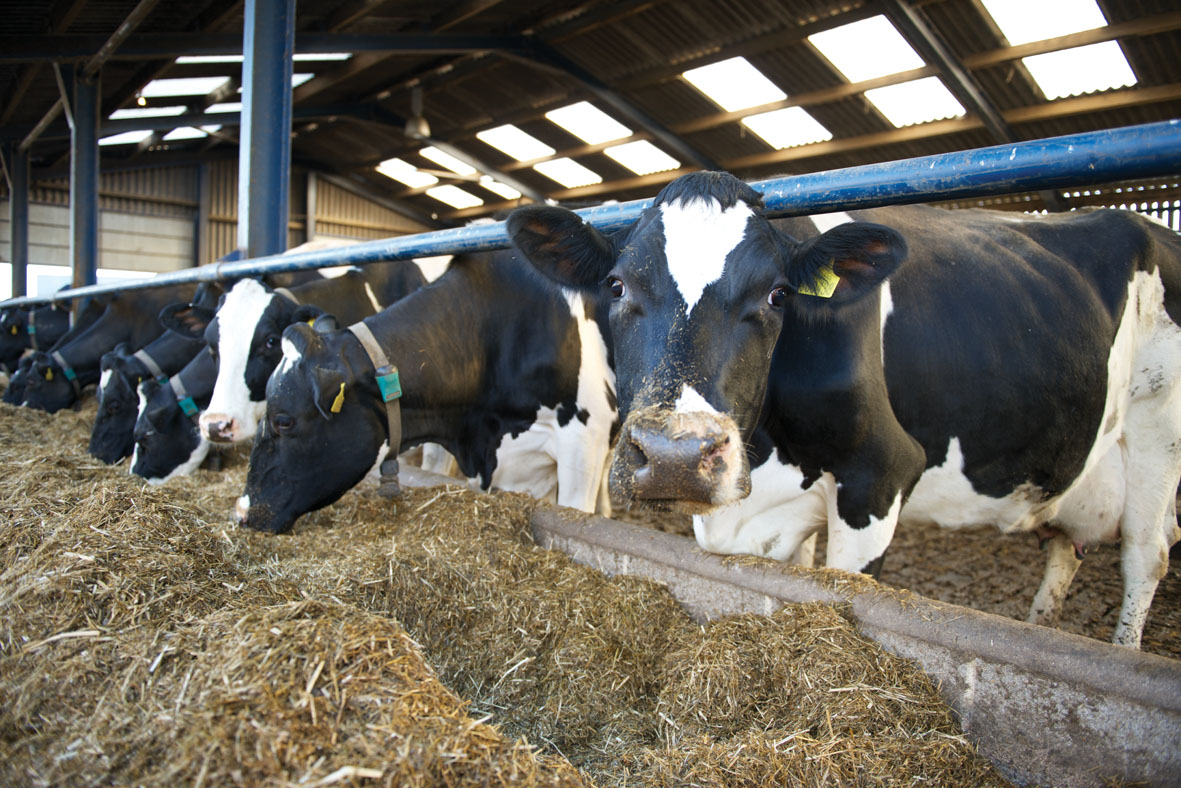A study performed at the University of Nottingham’s Centre for Dairy Science Innovation (CDSI) has found that 10g per day of Actisaf increased energy-corrected milk yield by 2.8 kg/day, or 5.5%. This improvement came with no effect on dry matter intakes (DMI) or detrimental effects on fertility, body condition score or cow health - powerful evidence of Actisaf’s role in improving the feed efficiency of dairy cows.
“Multiple factors contribute to increasing milk yield within herds. Typically, improvements in forage quality, higher concentrate feeding levels, precise balancing of diets, increases in DMI and improvements in environmental and welfare conditions result in more milk solids in the bulk tank,” explained James Ambrose, Commercial and Technical Manager for Phileo by Lesaffre UK and Ireland.
“However, what these results tell us is that Actisaf is increasing milk yields through improved digestibility of fibre, unlocking more energy from the same amount of feed without jeopardising fertility or cow health. The potential impact of this new data on dairy farming businesses is really exciting.”
Phil Garnsworthy, Professor of Dairy Science at the University of Nottingham, oversaw the trial and explained the importance of feed efficiency: “As feed comprises 50-70% of costs on a dairy farm, anything you can do to minimise that expense without sacrificing yield is good for profitability and sustainability” he said.
“Dairy cows are great at converting grass, which typically grows on land that is unsuitable for other crops, into a highly nutritious food. Improving the cow’s efficiency in doing so not only has implications for a farmer’s bottom line, but also for wider issues like the impact of farming on the environment and land utilisation.”
Trial Design
The trial was run using the Centre’s high performing Holstein-Friesian herd that averaged 12,500 litres per cow per year prior to the trial, approximately 1.5 times more milk than the UK national average. Cows were housed in the Centre’s state-of-the-art facilities, which include sand bedded cubicles, automated PMR feeding, brushes and robotic milkers.
The trial was a continuous design with two treatments applied to 25 cows per treatment from 7 days after calving until 128 days in milk. Cows were paired pre-calving according to parity, predicted milk yield and live weight, then randomly allocated to either the control group or treatment group.
Throughout the trial, both groups were fed their normal diet of ad lib partial mixed ration (PMR) and concentrate fed through the robot at the rate of 0.45 kg/litre above 30 litres/day milk yield. The PMR contained grass silage, maize silage, whole-crop silage, a soya:rape blend, molasses, protected fat and minerals.
The treatment group was fed 10 g/day of Actisaf in the PMR, with the control group receiving a placebo.
Results and Implications
The results of the study showed that Actisaf significantly increased the yield of energy corrected milk with no associated lift in DMI, thereby significantly improving feed conversion efficiency by 5.5% on average. This improvement in performance had no negative effects on body condition score, health, methane emissions or fertility, and ultimately resulted in a 5.5% reduction in carbon emissions per kg of energy corrected milk.


As DMI was not affected, the increase in milk yield can be attributed to increased digestibility, which in turn would effectively increase metabolisable energy (ME) supply to cows. Additionally, the ability to increase milk production from forage through increased NDF digestibility demonstrates the role Actisaf has to play in helping cows reach their genetic potential, improving profitability and reducing the environmental impact of milk production.
James summarised how Actisaf was able to achieve this. “When feeding dairy cows and other ruminants, it is important to remember that we are actually feeding the rumen microbes that break food down and convert it into a utilisable energy and protein source for the cow.”
“Actisaf’s primary function is to stimulate the growth of rumen bacteria that digest fibre, thereby releasing more energy from forage. Simultaneously, it is also encouraging the growth of bacteria that regulate rumen pH and minimise the build-up of lactic acid in the rumen, which causes acidosis or serious digestive upset if left to accumulate.
“This later group of bacteria convert lactic acid into propionic acid, a major source of glucose that is needed for the production of lactose, a key determinant of milk yield.”
In doing so, Actisaf increases milk solids and liquid yields, reduces incidences of acidosis and reduces the variability in performance associated with dietary changes, all benefits that are supported by a large library of peer reviewed trial work.
“This research backs up results we have seen on farm and getting the same outcome in a robust piece of scientific work is significant. Because of Actisaf’s ability to improve feed conversion, we believe it has an important role to play as the dairy industry moves toward even greater efficiency in a world where sustainability of production will be crucial,” James adds.
Professor Garnsworthy was also intrigued by the outcome, especially considering Actisaf’s effect on such a high performing herd.
“Going into the trial, the cows were already highly efficient animals with highly efficient feeding systems in place. There aren’t many ways to improve on 50kg of milk per cow per day over the first 18 weeks of lactation,” he concludes. “Here we were able to get 2.8kg of energy corrected milk more from a cow after feeding only 10g of product. These results show that Actisaf is doing exactly what it says it does – improving the digestibility of the diet and releasing more energy from feed for increased milk production.”
For more information about Actisaf and how to include it in your herd’s diet, visit www.yeastsolutions.co.uk or call 061 708 099 (ROI) or 028 9334 3900 (UK).

